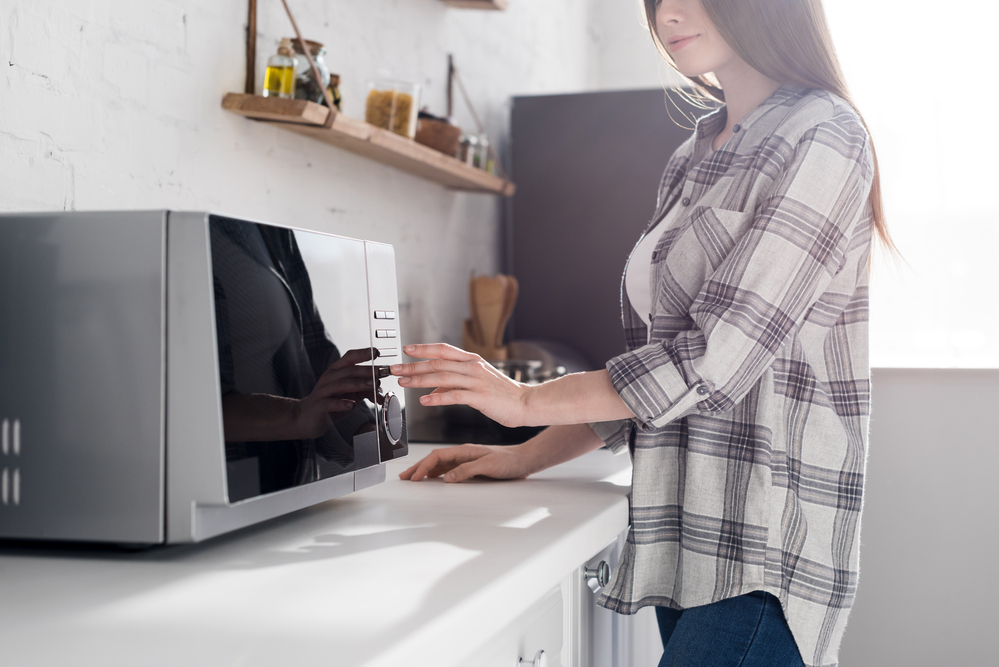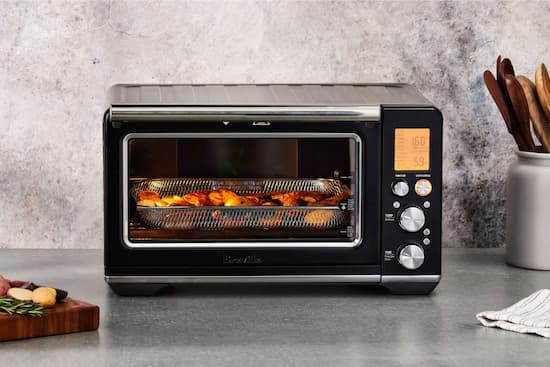As an Amazon Associate, I earn from qualifying purchases
A typical microwave oven uses between 600 to 1200 watts of power. The exact wattage depends on the model and its size.
Understanding the energy consumption of your microwave oven is crucial for both efficiency and economic reasons. Microwaves are a staple in modern kitchens, offering quick heating and cooking capabilities. They come in various wattages, which directly affect their cooking power and energy usage.
A higher wattage means the microwave can cook food faster, but it also uses more electricity. Consumers often choose a microwave based on their cooking needs and the appliance’s energy efficiency. Knowing the wattage is also beneficial for those looking to manage their household’s power consumption. Choosing the right microwave can help you save on your electricity bills while still enjoying the convenience of quick meal preparation.

Credit: www.whirlpool.com
Decoding Microwave Oven Wattage
Understanding your microwave oven’s wattage is crucial. It influences cooking efficiency and energy usage. Let’s unveil the mystery behind microwave wattage.
Average Wattage Range
Microwaves vary in power. Most home models range between 600 to 1200 watts. Professional ones may exceed this. More watts mean faster cooking. Yet, they also consume more energy.
| Wattage | Cooking Speed | Energy Use |
|---|---|---|
| 600-800W | Slower | Less |
| 800-1000W | Moderate | Medium |
| 1000-1200W | Faster | More |
Factors Affecting Consumption
Several factors impact how much energy a microwave uses.
- Usage Frequency: More use equals higher bills.
- Size: Larger microwaves often need more power.
- Settings: High heat settings increase wattage.
- Efficiency: Older models may use more electricity.
Select a microwave that matches your cooking needs. This choice can save time and reduce energy costs.

Credit: www.coastappliances.ca
Types Of Microwave Ovens
Understanding the types of microwave ovens is key to knowing their power usage. Different models come with varying wattage requirements. Let’s explore the common microwave types and their energy consumption.
Solo Microwaves
Solo microwaves are the simplest form. Perfect for reheating and basic cooking, they typically use between 600 to 1200 watts. Here’s a quick overview:
- Standard reheating
- Defrosting capabilities
- 600-1200 watts power usage
Grill Microwaves
Grill microwaves step up with grilling features. They use a bit more power, ranging from 1000 to 1300 watts. Key points include:
- Grill function for meat and vegetables
- Browning food surfaces
- 1000-1300 watts power usage
Convection Microwaves
Convection microwaves combine microwave energy with a convection fan. This allows for baking and roasting. They are the most versatile, using 1200 to 2200 watts. See the specifics:
- Baking, roasting, and crisping
- Even heat distribution
- 1200-2200 watts power usage
Measuring Power Usage
Understanding how much power your microwave uses is important. It helps manage energy costs and efficiency. Let’s explore two methods to measure your microwave’s power usage.
Using A Wattmeter
Using a wattmeter is the most accurate way to measure power usage. Here’s a simple step-by-step guide:
- Plug the wattmeter into your wall outlet.
- Connect your microwave to the wattmeter.
- Turn on the microwave and note the reading on the wattmeter.
This tool gives you real-time usage data. It shows how many watts your microwave consumes while it operates.
Estimating From Specifications
You can also estimate power usage from the microwave’s specifications. Look for a label on the back or side of the microwave. This label lists vital information, including power specifications.
- Find the wattage rating, usually marked as ‘Watts’ or ‘W’.
- Note this number as the maximum power the microwave uses.
The wattage rating gives a good estimate of the maximum power consumption. Remember, actual usage can vary based on settings and usage patterns.
Both methods provide insights into your microwave’s energy consumption. They help make informed decisions about its use and energy management.
Impact Of Usage Patterns
The way we use microwave ovens can greatly impact how much energy they consume. Different usage patterns mean different power draws. Let’s explore how cooking time and standby power affect energy use.
Cooking Time Influence
Microwave ovens draw power based on how long they operate. Shorter cooking times use less energy, while longer sessions can lead to higher energy consumption. Let’s break down the influence of cooking time.
- Short Bursts: Ideal for reheating or defrosting small items.
- Full Meals: Require longer cooking times, increasing wattage use.
Power settings also affect energy use. Lower settings draw less power over longer periods, while high settings use more power quickly.
Standby Power Draw
Even when not cooking, microwaves use energy. This standby power keeps clocks and settings ready. The table below shows typical standby power draws.
| Brand | Standby Power (Watts) |
|---|---|
| Brand A | 3.5 |
| Brand B | 2.0 |
| Brand C | 4.0 |
To reduce standby power, consider unplugging the microwave when not in use. This simple step can save energy and cut costs.
Energy-efficient Microwave Practices
Understanding the wattage of microwave ovens helps in choosing an energy-efficient model. Microwaves typically range from 600 to 1,200 watts. Knowing the right practices can lead to energy savings.
Choosing The Right Model
Select a microwave with a wattage that suits your needs. Higher wattage heats food faster but uses more power. Look for models with energy-saving features like adjustable power levels.
| Wattage | Efficiency | Heating Time |
|---|---|---|
| 600-800W | Good for small meals | Slower |
| 800-1000W | Balance of efficiency | Moderate |
| 1000-1200W | Fast heating | Faster |
Optimal Usage Tips
- Only run the microwave when you need it.
- Use the right container size to avoid energy waste.
- Defrost food before microwaving to reduce cooking time.
- Keep the interior clean for efficient operation.
Following these tips ensures your microwave runs efficiently, saving electricity and money.

Credit: www.electricrate.com
Comparing To Other Appliances
When choosing kitchen appliances, power consumption is a key factor. Microwaves are popular for their convenience. But how do they stack up against other cooking methods in terms of energy use? Let’s dive in and compare.
Microwave Vs. Oven
Ovens are common in most kitchens. They cook food evenly and are perfect for baking. Microwaves use less energy than conventional ovens. On average, a microwave uses 600 to 1200 watts. A typical oven can use around 2000 to 5000 watts. This means a microwave can be more energy-efficient for smaller meals.
Microwave Vs. Stovetop
Stovetops are great for simmering and frying. A gas burner might use about 900 to 1200 watts of energy. Electric stoves can use 2000 to 3000 watts when cooking. Microwaves often use less power. They heat food quickly and are best for small portions.
| Appliance | Wattage Range |
|---|---|
| Microwave | 600 – 1200W |
| Oven | 2000 – 5000W |
| Stovetop (Gas) | 900 – 1200W |
| Stovetop (Electric) | 2000 – 3000W |
In conclusion, microwaves often consume less electricity. This makes them a cost-effective choice for quick meals and reheating food.
Frequently Asked Questions
Do Microwaves Use A Lot Of Electricity?
Microwaves typically don’t consume excessive electricity, often using less power than conventional ovens. Their efficiency and shorter cooking times help keep energy use moderate.
Are Most Microwaves 1200 Watts?
Many microwaves feature a range of power levels, but not all are 1200 watts. Power can vary widely between models and brands.
Is There A Big Difference Between A 1000 Watt And 1100 Watt Microwave?
The difference between a 1000 watt and 1100 watt microwave is minimal, with the 1100 watt heating food slightly faster.
How Many Watts Does A Full Size Microwave Use?
A full-size microwave typically uses between 850 to 1800 watts, with an average of about 1000 watts. Wattage varies based on the model and manufacturer.
Conclusion
Understanding your microwave oven’s wattage is key to efficient kitchen operation. Typically, these appliances range from 600 to 1200 watts. By knowing your model’s power use, you can better manage energy consumption and cooking times. Always refer to the manufacturer’s specifications for the most accurate information.
Embrace smart usage to save on your energy bills and enjoy perfectly heated meals every time.
As an Amazon Associate, I earn from qualifying purchases
